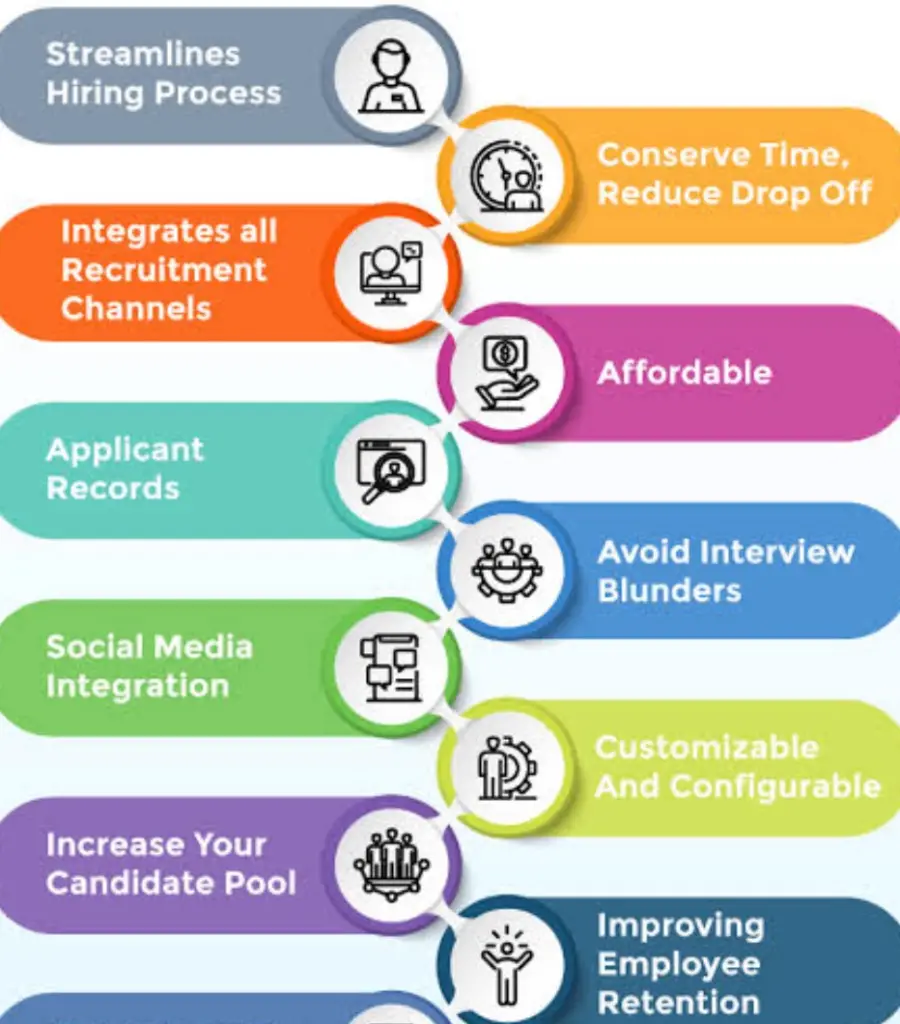Talk of the technological disruptions in the world today, and you’d see that no sector of the world’s economy is left out. Technological innovations are everywhere, from the health sector to the military and even automobiles.
One beneficial technology in the Human Resource(HR) sector is the Applicant tracking system. HR departments, recruiters, and hiring managers testify to how ATS makes their lives easier. Talk of the most sought-after tool in the recruitment vertical, talk of ATS.
Say you’re a recruiter for a large corporation, and you hire tens and hundreds of employees for diverse roles frequently; you don’t want to start filtering through thousands of CVs to get that one applicant that is qualified for the position.
With ATS, you’d be able to score and rank CVs with metrics such as–job titles, work experience, and even main keywords. This means applicants must fully optimize their CVs and make them ATS compliant.
Are Applicant Tracking Systems really essential for hiring success? Yes. See why.
ATS–how it works
An ATS would usually perform multiple functions. Typically, you can curate the job description with your ATS system if hiring for a role. It also lets you manage each phase of the hiring process seamlessly.
Applicants can also create personal profiles as regards the role they intend to fill. With the aid of an ATS resume checker, they can also create outstanding resumes, cover letters, and resignation letters.
The ATS system monitors all the activities about the positions open for hire and the interested applicants.
To better understand how the applicant tracking system works, below is a short description of the scenario between a recruiter and the ATS system during recruitment.
At the initial stage, recruiters get to review the applications in the ATS system. No doubt, not all applications will be fit for the job. Applicants who are not selected may get a message to that effect.
The next stage is interviewing qualified candidates depending on the recruiter’s style. If the right candidate is eventually found, the ATS is also used to send the employment offer to the candidate.
The ATS functions are also available for necessary documentation when onboarding the newly employed. The exact process is repeated if the right candidate still needs to be found or another open role is to be filled. That’s how seamless the ATS process looks.
ATS vs. Manual Tracking Efforts
Responses from a recent survey carried out by PWC show that 39% of respondents note that the two significant issues with Human Resources are in recruitment, collection, and analyzing HR data.
While HR departments may utilize manual/human efforts to tackle these issues, they still need to be more efficient. A robust ATS alternative comes into the picture.
Although, there have been misconceptions from some quarters about deploying artificial Intelligence for recruitment. Some schools of thought believe ATS dehumanizes the whole hiring process.
Here is the catch–the AI functionality in an ATS is designed to mimic the human thought process. Say, as a recruiter, you want to scan a resume manually.
The same way you’d look for keywords is the same way an ATS would. In fact, the ATS does it faster, which helps to save time and cost. Who doesn’t want an easy work life? I bet you do.
The truth is– desk drawers and locked file cabinets don’t do it anymore. They are not the most innovative ways to secure applicants’ files. If you still do those in this era, that’s a security risk.
An ATS enhances safety and compliance. All data is secure and cloud-based. No one is saying ATS is perfect. However, an efficient applicant tracking system imitates the human mind for the most part. It performs the same tasks as humans, even more efficiently.
Why Applicant Tracking Systems Are Essential for Hiring Success
Utilizing an applicant tracking system allows you to organize and manage job postings and candidates’ applications from one central database. An efficient applicant tracking system does not make the job easier for the recruiting firm alone. Candidates applying for jobs can also benefit from a robust ATS.
Say a candidate is applying for a particular role but is not fit for it. Fortunately, there is another role the applicant fits perfectly for. With ATS, you can transfer the applicant’s details to a different job listing.
It helps remove the applicant’s stress of going through the application process again. The organization also saves time from going through another round of interviews with a new set of applicants. That’s a win-win situation.
Other reasons hiring managers, HR departments, and recruiters consider ATS to be essential for hiring success include the following:
- Filters suitable candidates out of a large pool
Any hiring system is successful if its aim to get suitable candidates to fill advertised roles is achieved. At least, that’s what an organization wants at the end of the recruitment process. With ATS, it’s easy to know candidates are not readily fit for a role. That helps you save the time you’d have wasted if you sorted it manually.
According to a recent survey, 78% of recruiters say ATS has leveled up the hiring quality since adopting it. The average recruiter’s longest lifecycle to properly make a hiring decision with ATS is ten days. That’s super fast.
ATS has a series of inbuilt knockout questions to filter qualified candidates. For the most part, these are short questions regarding the role. An applicant that fails to answer these questions is thereby disqualified.
- Helps onboard employees that’ll hit the ground running almost immediately
Large corporations with lots of workloads and commitments want to employ candidates that’d need little or no training to get on. This is because, at the assumption of the new employee’s role, tons of tasks are waiting.
An applicant who needs to gain the skills and experience to tackle the tasks would only slow down the process.
In addition, there will be a loss in productivity or a tendency to overwork current employees if suitable candidates are not found after a while. You can seamlessly transition from a candidate to a full-fledged employee with an ATS.
- Supports team hiring; while you also record Interview sessions
The best recruitment happens if it’s done by a team and not just a single person. With ATS, HR departments can make essential notes on candidates, make crucial comparisons, and record the interview session.
Every hiring team member can exchange opinions and thoughts on the candidates before making a final decision.
Interviews are the most crucial part of the hiring process. Suppose a scenario arises where the hiring team thinks they’ve not been fair to a particular candidate. In that case, you can revisit the recording sessions to make amendments.
What businesses need ATS
Whether you’re a startup, a small and medium business, a large corporation, or a Fortune 500 business, one thing is sure. You need quality employees for your business, which is one of ATS’s perks.
As a startup founder, it’s easy to assume that ATS is only helpful for large businesses. That’s only an assumption. Typically, due to limitations in terms of resources, and budget, startups go for more affordable ATS solutions.
More prominent corporations, on the other hand, invest in more robust ATS solutions. This is because they get to process more significant amounts of CVs and job applications, which is time-consuming to be done manually.
ATS serves all businesses irrespective of size or how long they’ve been in business. Be aware of the benefits of this fantastic technology.
ATS–save money and time
How you manage the resources of money and time can determine the success of your business. That is why smart business owners capitalize on automation tools, so they’d have the opportunity to face other revenue-yielding activities.
One of those automation tools is ATS. With it, you can maintain an existing and sufficient talent pool for your subsequent recruitment. That way, you save the cost of placing a new set of job ads.
For the most part, qualified and skillful applicants frown at lengthy hiring processes. It is always advisable to keep your hiring phases short. Failure to effectively communicate with talents during the hiring period may lead to a hijack by other organizations.
You may think an ATS is quite expensive to adopt by your organization. In that case, you may need to do the math of what the loss in productivity would cost you, especially if you’re in the production domain.
You’d undoubtedly discover the savings in costs an ATS offers you amidst all its other benefits. There can never be a time to join the league of intelligent business owners already utilizing this great tool then now.
*Featured Image source




